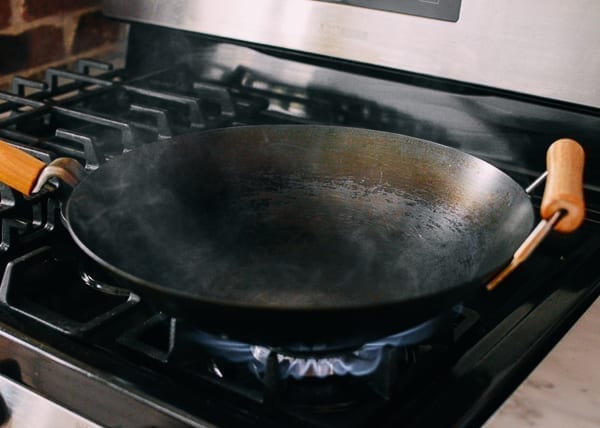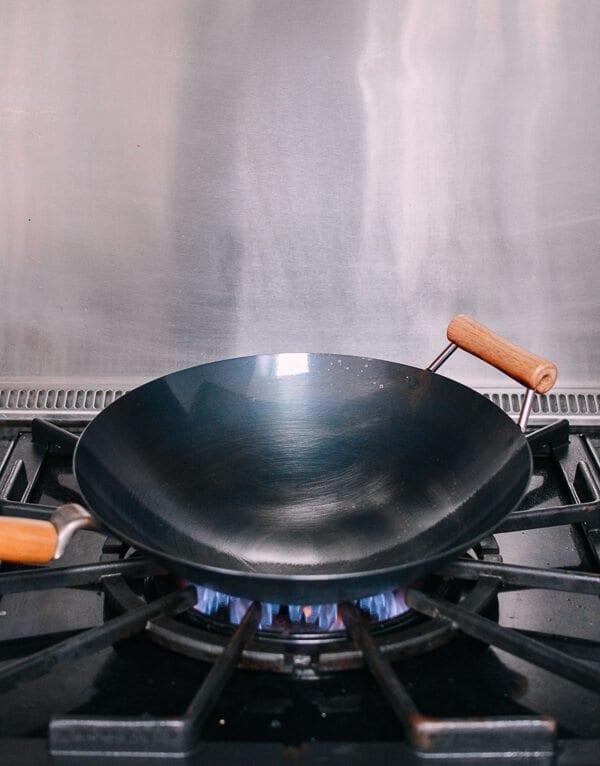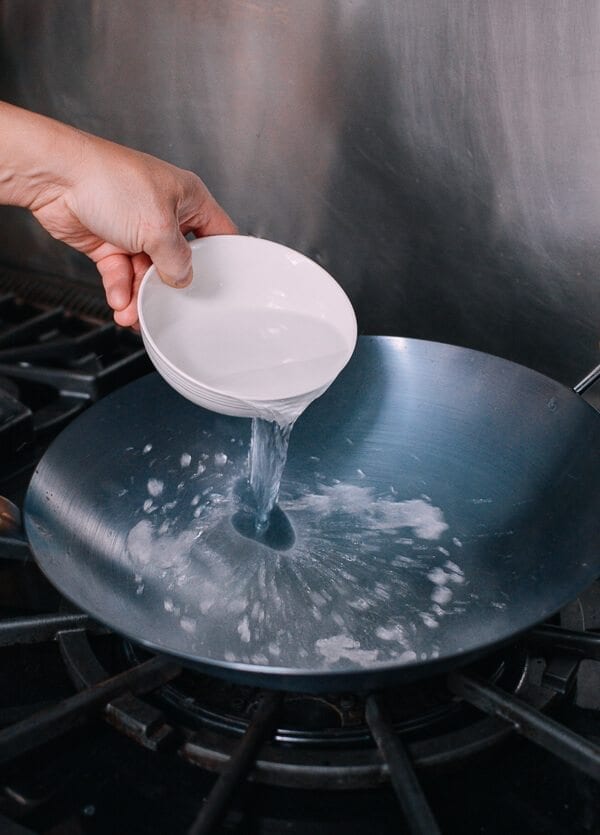We’ve all dealt with terrible messes from food sticking to a pan or wok. Maybe it’s a pan-fried fish that ends up skinless, a crusty coating of rice or noodles that’s impossible to scrub off, a fried egg that gets unceremoniously scrambled because it just wouldn’t come off the pan, or bits of meat that just won’t come loose, blackening as you watch, helpless.
I promise to keep this post short and sweet by telling you the ONLY kitchen technique you need to keep food from sticking to your pan or wok. No special equipment or ingredients necessary!
Too much oil during the seasoning process could result in a sticky pan with uneven, flaking, or beaded seasoning. When you’re ready to season your carbon steel pan for the first time, head to our How to Season Carbon Steel Cookware guide, complete with a step-by-step video detailing our favorite stove-to-oven method.

Why This Trick Works
I wish I were smart enough to explain this technique in more scientific detail, but I can only tell you what I know. All pots, pans, and woks have grooves––tiny peaks and valleys on the metal surface that aren’t always visible to the naked eye. These grooves trap moisture each time you wash your wok or pan.
When you preheat pans adequately—in this case, we recommend heating until they just start to smoke—it eliminates any moisture in the metal.

There may be other reasons, but I’m not a scientist who can explain it down to the molecules. (If you happen to be one, please sound off in the comments!) But I do know that this trick works, and it works every time.
Update: With help from a reader, we’ve also found out that preheating the wok causes the residual oils on the wok to heat up, and that once that oil heats past smoking point, the carbon in the oil bonds with the metal to fill in nooks and crannies in the uneven surface of the wok, to create a smoother, non-porous surface. This is also how the seasoning process works (oiling and heating the pan).

How to Properly Preheat Your Wok To Keep Food from Sticking
Needless to say, always start with a clean wok or pan! It also helps to have a high-quality durable carbon steel wok or cast iron pan (note: this method does NOT work with non-stick pans, which cannot be safely heated above certain temperatures). If you are using a well seasoned wok, your chances for successful non-stick cooking using this method is even better!
So, when you set it over the heat, how do you know when a pan or wok is hot enough? Simply heat until the wok starts to smoke.
You don’t want to start a fire or anything, but once you see light tendrils of smoke rising up, it’s hot enough, and you can proceed with adding your choice of oil (choose one that is good for high heat cooking, like avocado oil or canola oil).
If you find it difficult to see smoke, you can flick a couple of drops of water into your heated pan/wok. When it’s hot enough, the water drops will roll / jump around the pan like little pearls.
You can see what this looks like in the photo below (this is a carbon steel wok, but you get the idea. We poured in quite a bit of water, so that you could see the effect more clearly in the photo):

Just make sure to cook off the water drops before adding oil, or the oil will splatter.
It is also important to remember that raw proteins typically don’t want to be flipped or moved around before they’re adequately seared or browned. It doesn’t matter how you preheat your pan if you try to flip an egg before a light crust forms!
Five Carbon Steel Mistakes and How to Fix Them
FAQ
How do you keep food from sticking to carbon steel pans?
Why does food stick to my carbon steel wok?
How do you fix sticky seasoning on carbon steel?
Why is my carbon steel pan not non-stick?
Why does food stick to carbon steel pans?
Insufficient seasoning or seasoning wearing off is another common reason for food sticking to carbon steel pans. As mentioned earlier, seasoning acts as a barrier to water, preventing the pan from rusting on a molecular level. The seasoning also creates a slick, non-stick surface that allows food to release easily from the pan.
Why does food stick to stainless steel pans?
Four main factors contribute most to food sticking to stainless steel pans: too much heat, not enough heat, cooking the wrong types of food, and improper cleaning. Too much heat can cause food to stick to stainless steel cookware. Why? Remember, heat causes the pores on the pan’s surface to contact.
Does a carbon steel pan stick?
Use your newly seasoned pan to cook vegetables, deep fry, or shallow fry food. Your carbon steel pan will be quite nonstick after the patina has built up. But for a newly seasoned pan, your food might still stick. Here are some recipe ideas: Always use more oil when you’re cooking with a new pan.
How do you stop food from sticking to a stainless steel pan?
Yet, we have found a few ways to stop food from sticking to a stainless steel pan. These include preheating the pan, trying out the water droplet test, using low heat for cooking, and ensuring that the oil is heated properly. Why Does Food Stick to a Stainless Steel Pan?
